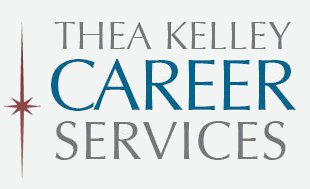 Video interviews bring a unique set of challenges, including some you probably don’t know about (or know about, but haven’t solved yet). It’s nothing you can’t handle–just follow the tips below.
Video interviews bring a unique set of challenges, including some you probably don’t know about (or know about, but haven’t solved yet). It’s nothing you can’t handle–just follow the tips below.
And if you need help getting motivated about all these details, read my post, Why do video interview technicalities matter?
Embrace the technology.
Make sure you have a good internet connection, with a speed of 1-4 Mbps or better. Struggling along with poor connectivity is one of the biggest mistakes you can make, according to recruiters.
If you’re on a laptop, make sure the battery has enough charge.
Lighting is key. A candidate sitting in gloomy darkness looks neither approachable nor professional. Good light also makes you look more attractive, which never hurts. Natural light is flattering, so facing a window works well. Or clip an inexpensive ring light (also known as a selfie light) onto your monitor. Avoid overhead light, which can cast shadows on your face. Light sources should be in front of you, off to the side, or both. Multiple light sources are even better for even illumination.
Make sure the camera is at eye level so you’re eye-to-eye with the interviewer’s view. You don’t want them looking down on you, and nobody wants to look up anybody’s nose. If you’re using a laptop, this means raising it somehow. Beware of putting it atop a teetering tower of books! Stability is crucial.
The microphone that’s built into your computer may be good enough, but sometimes these pick up too much echo or background noise. A Lavalier mic may be better. As for the camera, the webcam in your computer is usually all you need.
Don’t get caught off guard. Cover the camera lens and turn off the microphone until you’re ready to be seen and heard.
Use good body language.
Some of the most crucial body language signals revolve around eye contact. In a video interview, if you look at the image of the person you’re talking to, they’ll see you looking downward, not into their eyes. Instead, look into the camera.
If you shrink the teleconferencing window until it’s only a few inches tall, you won’t really need to choose between looking at the interviewer and looking at the camera, because they’ll both be so close together. When you look at the interviewer’s image, they’ll see you looking at them–in other words, making eye contact. Depending on what device you’re using, this might mean grabbing a corner of the window and dragging to shrink it.
However, don’t stare at the camera the whole time. That would be like maintaining 100% eye contact in a conversation, which is not normal. What is? According to noted social psychologist Michael Argyle:
“The amount of eye contact in a typical conversation ranges from 25% to 100%, depending on who’s talking and what culture they’re from. When we talk we maintain 40 to 60% eye contact with an average of 80% eye contact when listening. The notable exception to this rule is Japan and some Asian and South American cultures, where extended eye contact is seen as aggressive or disrespectful.”
Smile frequently but not constantly. This is easier if you make a point of cultivating a feeling of liking toward the interviewer.
If you gesture when you talk, be careful not to bump into the desk. The noise and vibration that creates can be distracting or even startling to the interviewer. Also avoid moving your hands close to the camera, which will make them look strangely large.
If you need to refer to notes, don’t put them on your desk or in your lap. Looking down tends to cut off the feeling of connection with the interviewer. Instead, array your notes on the computer screen itself, or on sticky notes around the sides of the screen. Keep your notes minimal, so that you only need a quick glance to remind yourself of a talking point.
As in any interview, lean slightly forward to show that you’re paying attention. (Leaning back in your chair can convey arrogance.) And never cross your arms, which can look unfriendly and defensive.
Dress for video.
Of course, wear smart interview attire, but there are a few more caveats. Experts disagree about some aspects of dressing for video, but most agree you should avoid a white shirt unless it’s mostly covered up by a jacket or sweater, avoid black and extremely bright colors, and avoid print fabrics because they can seem to shimmer strangely as you move. Watch out for heavy jewelry that can clunk against the desk or your microphone.
Are we over-thinking all this? Don’t interviewers make allowances for the unnatural circumstances? They might, but the fact is they’re still going to have a gut level reaction to your appearance, the sounds they hear, your nonverbal cues, and so on. Do everything you can to make them, and yourself, comfortable.
Use makeup, even if you don’t normally wear it.
The aim is not necessarily to look made up, but to look healthy. So even men might want to consider a little powder for a “cool, calm and collected” look, and maybe a natural-looking tinted lip balm to liven up pale or colorless lips. If your skin looks dried-out and lifeless, a bit of moisturizer may help. The same advice goes for anyone who prefers a natural look: you still need to exude vitality.
Do you think a woman with lipstick looks more professional? I tend to think so, although I’ve seen women rock a business suit without it.
To ace your video interview, practice in advance.
Whatever platform is being used for the interview, do a dry run ahead of time. Don’t just guess how you’ll look onscreen, and don’t assume you’ll be able to instantly figure out how to use the platform, or even that it will work as it’s supposed to. Try it out.
Be ready for this special challenge: the “virtual onsite” interview.
It sounds like a contradiction in terms, but a virtual onsite means everything you’d do in a lengthy onsite–one-on-ones, panels, presentations and more for hours, possibly the entire day. And the whole time, you’re looking at a screen. It takes stamina, and more. Find out how to succeed in this challenging new interview format.
Of course, you still have to do all the usual things you would do to get ready for an excellent interview in any format. But a virtual/remote interview does have special challenges. Prepare well to ace your video interview!

